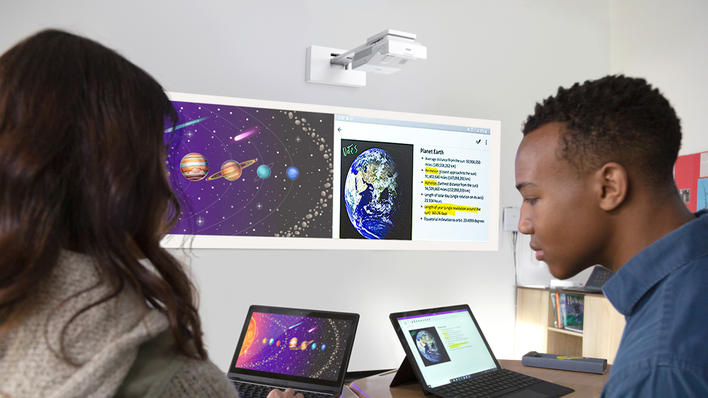Educational tools and technology are changing the way that classrooms are designed, teachers create curriculum, and students learn. When integrated the right way, technology can enhance the learning experience and create more engagement opportunities, especially in K-12 classrooms.
In fact, 73 percent of educators who utilize blended learning (a mix of traditional and digital teaching models) reported an increase in student engagement, according to the Center for Digital Education.
Here’s a look at some of the ways in which learning dynamics are evolving thanks to classroom technology:
From one-dimensional lectures to multimedia presentations
Thanks to technology, classroom lessons are regularly supplemented with graphical slideshows and video content. Students can now watch scientific experiments, footage of historical moments, and real-time presentations from cultural institutions like museums, libraries, and zoos.Teachers also have a means to invite virtual guest speakers to share their expertise.
Interactive projectors, which can be used on any wall, display content that can be updated in real time by students using their laptop or mobile devices. Wireless connectivity also makes it easy to share multiple screens from different students at once.
To get the most out of classroom screen time, it’s important to make sure that every student can see from his/her seat. Depending on the layout of your classroom, some students may not be able to read a display.Choose your display size carefully, and/or do some desk rearranging as needed.
From banned phones to app-based assignments
For the first time, mobile learning ranked as the top priority for K-12 IT leaders in the annual CoSN IT Leadership survey. In other words, educators are becoming more open to the idea of students using their smart phones and tablets as part of their classroom activities.
Even better, a recent report from Front Row Education found that more than 50 percent of teachers now have a one-to-one student-to-device ratio, which is nearly 10 percentage points higher than last year. That’s encouraging news.
Because not every school has enough tech tools to go around but still see the value in incorporating some tech components, however, many are adopting BYOD (bring your own device) policies so that students can use their personal mobile devices in class.
Whether it’s Chrome books, iPads, or personal smart phones, students are engaging with interactive quizzes, adding multimedia components to group presentations, and more.
From note-taking to flipped classrooms
The flipped classroom approach removes the teacher lectures and note-taking functions to an online platform to be worked on at home, so that classroom time can be used for peer discussions, group activities, and other hands-on projects.
Schools that embrace this idea are also redesigning classroom spaces so that there are no longer rows of desks facing the teacher in the front of the room. Instead, there are work spaces, centers with classroom tech tools, white boards for brainstorming, and areas for group collaboration and discussions.
By using more technology in the K-12 classroom, educators can offer instruction that appeals to students’ different learning styles, and better prepare young people for their digital futures.
Does your classroom need a tech upgrade? Find out more about K-12 classroom technology that can help keep your students engaged.
![]()



